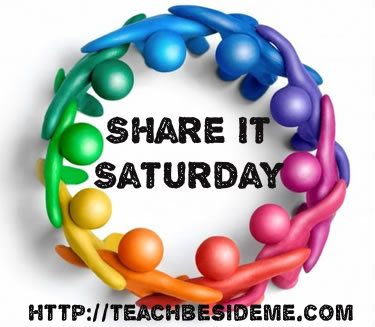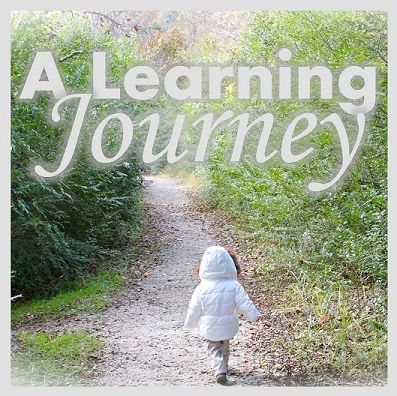
The topic for today is toys, games, and puzzles. Learning needs to be fun! We make learning fun in our house by using games, puzzles, and educational toys. I love sharing ideas or ways to make learning more active and hands-on. I have written about games in the past. Please check out those posts after reading this one. I will provide a link at the bottom. I have some new and exciting things to share with you all. Let's get started with one of my favorite topics math games. We have been playing a few brand new math games that I am dying to tell you about, so let me begin!
Math Games
Speed!Alyssa's interest in multiplication has grown over the last two months. I have been searching for a multiplication game that would be appealing to a five -year-old. Julie at Highhill Homeschool sent me her math game to called Speed! about a month ago. Have you heard about it? She created it to use with her daughter. It is now available for purchase on Amazon. I was a little nervous at first because because I wasn't sure how my five-year-old (Alyssa) would react to the game once I brought it out to play. She was automatically attracted to the box which contained 8 decks of sturdy, brightly colored cards. The game contains card decks for Two Speed through Nine Speed enabling your child to practice skip counting by 2's, 3's, 4's, 5's, 6's, 7's, 8's, and 9's. Each set of cards (number) is a different color which helps keep us organized.
The purpose of the game is to familiarize and teach your child the multiples of a given number (2-9). This is an awesome game that teaches several mathematical concepts and helps children master their multiplication facts. Children not only familiarize themselves with those concepts, but they are also learning how to skip count the multiples of a certain number both forward and backwards. The object of the game is to get rid of all your cards. This is a two-person, fast-paced card game and it can be played in 5-10 minutes which means you can play several rounds throughout the day. The speed aspect of the game makes it very addictive and fun! Alyssa was thoroughly engaged when playing the game. Her goal each time we played was to beat me. The first two decks that we opened were the 2 and 5 speed. I plan on practicing the decks that are easiest for her first (2, 3, 4, and 5). Then, we will play the higher decks (6, 7, 8, and 9) until those are mastered.
I wish there was a 10 speed. It looks like another deck of cards would possibly fit in the box. Oh . . . and before I get started with how to play the game. The cards also show Montessori bead chains on them which is an added bonus to individuals that teach using the Montessori method. The card decks do not match the colors of the Montessori bead chains yet it still reinforces the concept.
Set-up
- Make sure you shuffle the cards well the first time you play. Each player gets half of the deck.
- Each player will lay four cards face-up (from their stack) in front of them. These cards must be played first. You must replace the four cards as you play them with new cards from your half of the deck.
- Each player places a card in the middle. The two cards between the players are the starter playing cards.
- Both players begin playing using their stack of cards at the same time with the goal of trying to get rid of ALL their cards. Remember to play quickly hence the name of the game Speed!
- When the two cards in the middle are the exact same number - you MUST shout Speed! No . . . seriously shout it out! It makes the game more fun! The player that does NOT shout speed gathers ALL the cards from the center and adds them to his or her stack of cards.
- Rule: You may not play the same number on top of a card. For example, if there is a 4 on top of one of the playing piles you may not play a four. You can place a 2 or a 6 on top of the card.
 |
| The cards are shuffled and each player gets half of the deck. |
 |
| Alyssa is laying down her four cards (face-up) |
 |
| She is now adding one card to the center |
 |
| Let the game begin! |
 |
| SPEED!!!! |
 |
| This is how she looks before winning. She had a "16" card left. She was waiting for me to play my "14" so that she would win the game. |
Check out the creator's blog at HighHill Homeschool to see ways she used the game as a teaching tool to cover several other math concepts. I highly recommend this game to any home educator or classroom teacher.
Warning: This app game can be very addicting! We have shown the app game to several other friends and relatives. They end up not wanting to give us the iPad back because they like the game so much and want to keep playing it.
Disclaimer: This is not a review. We enjoyed using this product so much that I wanted to share the game with my readers. However, I was sent the game, Speed, in exchange for a brief mention or blurb on my blog. I was not required to write any positive comments nor was I compensated in any other way. All opinions expressed are my own or those of my family. I am disclosing this information in accordance with the FTC regulations. I am not sure if this is needed or not but I just wanted to include it to be on the safe side.
Rolling in the Money
I bought Rolling in the Money during a ding and dent sale at a very low price. It was given to Alyssa in her Easter basket last year. We finally had the time to play it this year. This game reinforces coin identification, addition, and finding the sum or value of a group of coins. Alyssa counts change every day so I thought it was the perfect time to give the game a try. I so wish I took it off the shelf earlier. The idea is to get the closest to $1.00 after three rolls. If an "X" is on the die, then you can't roll it again. The child adds up the amount of money using the dice. For younger learners, I suggest adapting the game by adding real coins. I wanted Alyssa to feel and see "real" coins when counting sets of coins. You play five rounds. The winner is the person that won the most rounds. This game also provides directions for a challenge game. The Amazon reviews are low because users state that the numbers on the dice rub off. The dice could be easily recreated by using free resources online if that were to occur. Although . . . I hope it doesn't happen because we enjoy playing this game and my time is limited right now.
 |
| She would occasionally place the coins under the dice (Close-Up Shot of Dice) |
 |
| Recording Our Totals for Each Round |
 |
| Scoresheet: She Circled the Greatest Total For Each Round Mom Won (Indicated With a Star)! |
Fraction Formula would be more fun if you play it with 3-4 players instead of just two players. This is a great way to expose your child to fractional parts and equivalent fractions. The player that gets the closest to 1 (whole) gets the most points. Points earned depend on how close you are compared to the other players. The players take turns flipping over fraction cards. Alyssa reads her card aloud, identifies the fraction piece, and drops the part in her cylinder. If a player goes over 1, then they are out of that round and zero points are earned. The child is constantly reading fractions, recognizing fractions, and comparing fractions. Alyssa constantly compared cylinders letting me know who was closer to one (whole). At the end of the game, I asked Alyssa to add up everyone's scores so that she could also practice her addition skills. She was in charge of announcing who the winner was in the end. The winner was the person with the highest score after five rounds. This game is intended for third grade and up and includes directions for a challenge version of the game. However, I feel you could easily adapt the game for younger children. You could also use the game as a math manipulative giving your child time to explore the pieces until you feel they are ready to play the game. Alyssa spent time exploring the pieces long before we actually played the game. Be sure to point out that you do not win if you reach the tippy top of the cylinder. You win when you reach the marked line near the top of the cylinder.
 |
| Flipping over her card and reading it aloud |
 |
| Fraction Formula Playing Cards |
 |
| Adding her fraction piece to the cylinder |
 |
| She is such a ham! She lost this round. |
 |
| Comparing cylinders as we play to see who might win |
 |
| These are the point cards earned after each round. |
 |
| Did she win? Did she reach the line? YES! |
 |
| Skip Counting to Find My Total |
 |
| Another Activity: Place 1/2 fractional piece in cylinder. Ask your child to show ways to make it whole. |
Making Math Memorable With Games
Math Games in a Bag
Math-U-See Race to One Hundred Game
Toys
Cash Register
My daughter plays with her Learning Resources Cash Register all the time. I bought it as a Christmas present one year. She uses is to set up a grocery store or restaurant activities. She practices counting money. There are also operation games on the cash register.
 |
| She takes money out of the cash register and counts it. |
 |
| She then indicates the amount of money on her cash register. |
 |
| I was trying to give her 3 quarters for a dollar. She was not going to exchange amounts with me. |
Melissa and Doug Clock
The Melissa and Doug Wooden Shape Sorting Clock is a wonderful toy that reinforces shape recognition, numerical order, colors, and telling time. I knew when I saw this toy at the store that I had to have it for Alyssa. I wanted to slowly expose her to the clock and the concept of telling time. We have had this toy for years and it was a smart investment because it covers a variety of concepts. She learned her colors in English and Spanish. She would put the numbers in numerical order before placing them in the correct spot. I remember the days when she was trying to figure out which shape would fit. Her little thinker cap was smoking! I am a huge fan of Melissa and Doug products and I own many of their products. We still use Alyssa's toy clock in Spanish and Math lessons. She will show me times on her clock.
 |
| Show and Tell Time (English and Spanish) |
This is a toy that teaches fractional parts including 1/2, 1/3, and 1/4 when compared to the whole piece. This could possibly be considered a mini puzzle. I can't find it on Amazon. It states that it is meant for ages 3 and up. It can be used with younger children but there are small pieces so supervision is required. We do not use this that often anymore, but I remember it being a gentle way to introduce fractions to Alyssa at an early age through play. She'll take it out occasionally when we are learning about fractions during her free time.
Stacking Number Blocks
I am sure that you probably had or have a set of similar stacking blocks in your household at one point or another. If not, you have most likely seen them somewhere in person or on the Internet. We bought ours for less than a dollar at a thrift store when Alyssa was a wee little thing. We still use them during Spanish lessons when discussing numbers. My daughter modeled how to use them for this photo . . . she was counting in Spanish when I took the photo. I would also ask her to sort the blocks based on whether the numbers are odd or even. These are great toys for young children. She still likes the stacking blocks and will take them out every once in awhile.
Puzzles
I remember a time when Alyssa would do nothing but puzzles most of the day. We have a variety of puzzles in our house for different subjects. Today I will only focus on a few math puzzles.Tangram Puzzles (Travel Tangoes Ages 5+)
This puzzle is based on the ancient Chinese puzzle called the Seven Piece Wisdom Board. The legend states that Tan dropped a tile on the floor and it broke into seven pieces. As he tried to recreate the square, he quickly realized that a variety of shapes could be designed. A tangram begins as a square. When I taught in the classroom, we gave each student a square copied on colored paper. They cut the pieces or tans and created designs using the seven pieces. The idea is that all seven pieces have to touch and can't overlap. We use this travel activity in conjunction with a variety of free resources found online and with the book titled, Grandfather Tang's Story: A Tale Told with Tangram by Ann Tompert.
I purchased the magnetic animal tangram puzzles at Target. There are seven magnetic tangram pieces and 24 black and white puzzle cards in flip book format included in a travel sized compact folder. Solutions are found on the back side of the puzzle card. You can easily recreate your own tangram set by googling a Tangrams template and by using magnetic paper or strips. We made them our of foam one year. These puzzles practice problem-solving skills, shape recognition, and pattern designs.. They encourage creativity and logical thinking which challenges the child's mind. Travel Tangoes also has people and object puzzle cases available to purchase.
Activity Village
MathWire
ABC Teach Tangram Template and Cards
Arvindguptatoys Alphabet Tangrams
ABC-Ya Tangram Puzzles Online
Tangram Paper Folding and Cutting Directions
PBS Mathline
This box contains 20 self-correcting puzzle sets suitable for ages 36 months and up. You can definitely use it with younger children with adaptations. When Alyssa was much younger, I would give her two or three number puzzle sets at a time. Once she could easily create those puzzles, I increased the number of puzzle sets or pieces. It wasn't long before she was able to do the entire box in one sitting. She was able to complete this puzzle at a very young age using this method. In the photo, you can see that she first sorted the puzzle pieces by pictures, number words, and numbers. Then, she started counting the random objects in order to figure out the correct number and number word for each set. As she completed the puzzle sets, she placed them in numerical order. There's a lot of learning going on when she uses this puzzle. I didn't have the time to go through my zillion photos of when she was younger so I asked her to play with the puzzles. You can also use these to play a matching or concentration game eliminating either the number words or numbers if desired. I found this puzzle at Ross and spent either $4.99 or $5.99 on it. I felt like I hit the jackpot. They had so many sets available to purchase. I left the store with a variety of puzzles that covered different concepts.
This box contains 30 self-correcting puzzle sets that teach children how to count from 1-20. This puzzle set is also suitable for ages 3 and up. Please keep in mind if used correctly, you can use them with a child before the intended age. This puzzle was used the same way when she as younger. I gave her several at a time until she was able to complete the entire box in one sitting. I believe when she was younger I also gave her manipulatives or objects to place on top of the pictures when counting aloud.
 |
| Sorting into Two Piles Alyssa was obsessed with sorting everything when she was little. |
 |
| She leaves spaces to indicate that she is missing one or more number puzzles. These puzzles can be used to play a "What's Missing" game too? |
My daughter never gets tired of her pattern block cards and pattern blocks. My Father's World sells wooden pattern blocks and a resource book titled, Pattern Animals: Puzzles for Pattern Blocks. We have several different types of pattern block cards including the colorful ones with lines as seen below, black-and-white designs, and shadow figures (no lines). We also found a few free helpful sets online that were especially useful when Alyssa was younger. Pattern blocks are great tools to have around. There are so many activities that you can do with them. Pattern block card designs are similar to puzzles for children. You can also find the Melissa and Doug Pattern Blocks and Boards on Amazon. I often purchase this set as part of the child's birthday gift. We also own the Melissa and Doug Beginner Pattern Blocks.
 |
| Identifying Correct Shapes to Cover the Design |
 |
| Completed Design |
 |
| Copying the Design |
Free Pattern Block Resources
If you make your own pattern blocks using paper or foam, please remember that not all linked websites with designs will be be compatible with each other. The size of the printable blocks may vary.
Prekinders - Awesome Pattern Block Designs
Kelly's Kindergarten - Printable Pattern Block Pictures
Confessions of a Homeschooler - Alphabet Pattern Block Cards and Patterning Cards
Utah Education Network - Pattern Block Activities and Templates
Hundred Board Puzzles
I created a couple sets of hundred board puzzles on colored paper. They are stored in Ziplock bags but unfortunately after the last move . . . I can't find them. You will find resources below that will help you create your own set of puzzles.
I created a couple sets of hundred board puzzles on colored paper. They are stored in Ziplock bags but unfortunately after the last move . . . I can't find them. You will find resources below that will help you create your own set of puzzles.
I hope you have found a few new toys, games, and puzzles to incorporate into your day. I have so many suggestions but I should only list a few and stop.
Do you have any math toys, games, or puzzles to recommend?
Feel free to comment below. I love reading your suggestions!
Please visit the Schoolhouse Review Crew Blog for additional posts on teaching creatively with toys, games, and puzzles. This is a blog hop so now that you are done reading my post, click on the next participating blogger's link to read more about this topic from another perspective. Thank you for visiting! God bless!
















































Thanks for sharing about the games... I love the look of the fractions game ill defiantly have to try and find that one for my boys!
ReplyDeleteAmy, my daughter will play with the manipulatives for the fraction game in her free time - she doesn't even realize she's learning how to find equivalent fractions. I think it's so funny when she runs into the room telling me her observations.
ReplyDeleteThanks for share that play puzzle games online info .
ReplyDelete